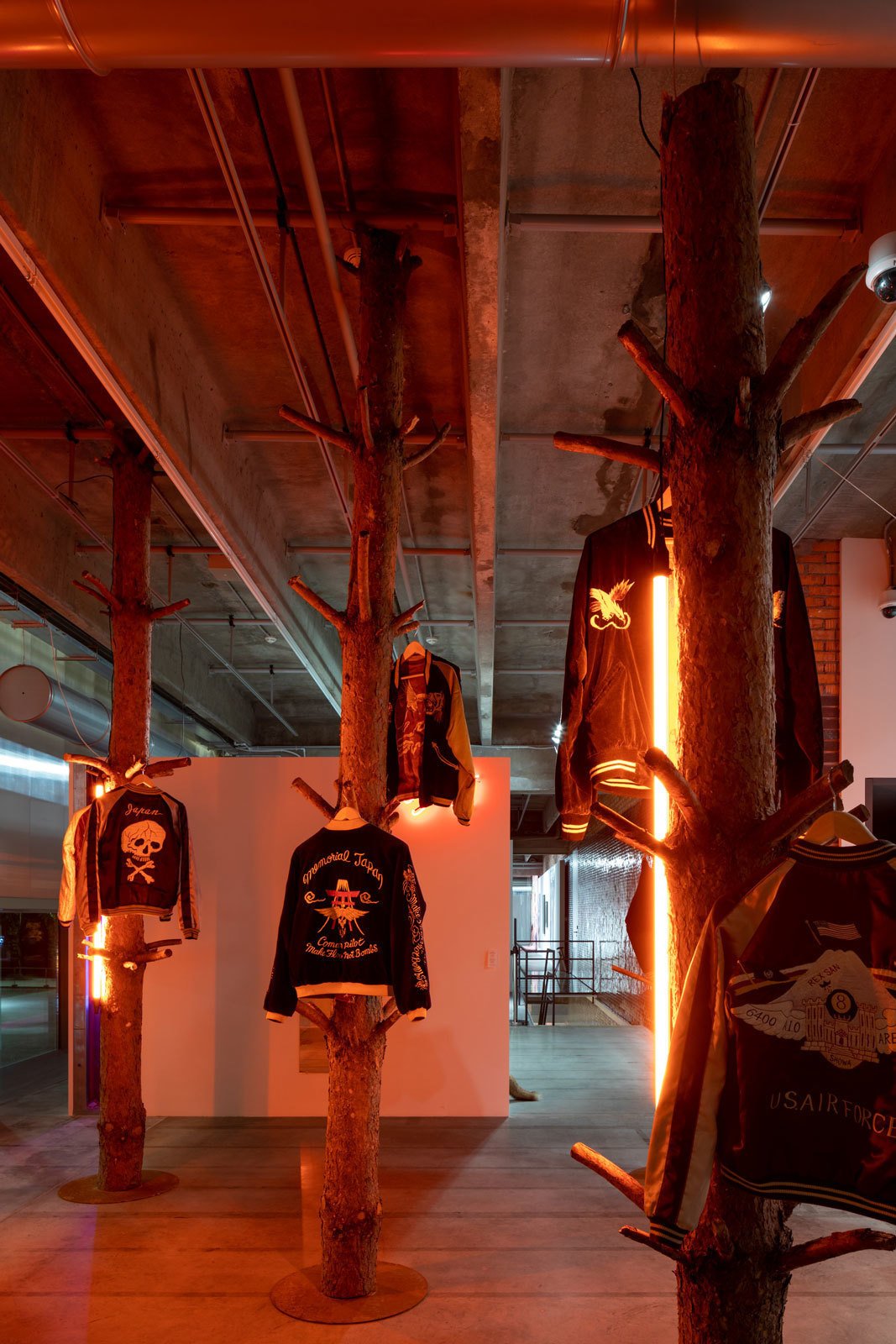Yuichiro Tamura
(b. 1977, Toyama, Japan; lives and works in Atami, Japan)

Hey Daddy, Hey Brother, 2017
12 bomber jackets, dimensions variable
Collection of KADIST
The American bomber jacket with traditional Japanese embroidery is a product of the Korean War (1950–1953). Since 1910, Korea had been occupied by Japan. After the allies defeated Japan in 1945, the United States and the Soviet Union divided Korea into zones of influence, just like Germany. The revision of the border along the 38th parallel began with the North Korean invasion of South Korea in 1950. In 1953, the conflict reached the cold phase that continues to this day. Bomber jackets with dragons and Mount Fuji were very popular with American soldiers stationed at military bases in Japan. After the withdrawal of the US armed forces, they became a fashion statement of the Japanese working class, and later of the yakuza, who appreciated the resemblance of the embroidery on leather to irezumi or full-body tattoos. The interpenetration of Japanese and American culture based on stylistic references to organized crime began with fashion designer Issey Miyake showing the collection “Tattoo” (1971) in New York. For “Tattoo,” Miyake created a print featuring the heroes of the “summer of love”—Janis Joplin and Jimi Hendrix—in a sinuous pattern reminiscent of irezumi. Yuichiro Tamura sees signs of the multi-layered identity of postwar Japan in the bomber jackets originally produced for the US military, which are known as sukajan (short for “souvenir jacket”). It reflects a class stratification that goes back to the feudal era (the first yakuza emerged from among small traders and regulars of illegal gambling establishments) and is also a textured collage of East and West characteristic of ever-increasing globalization.